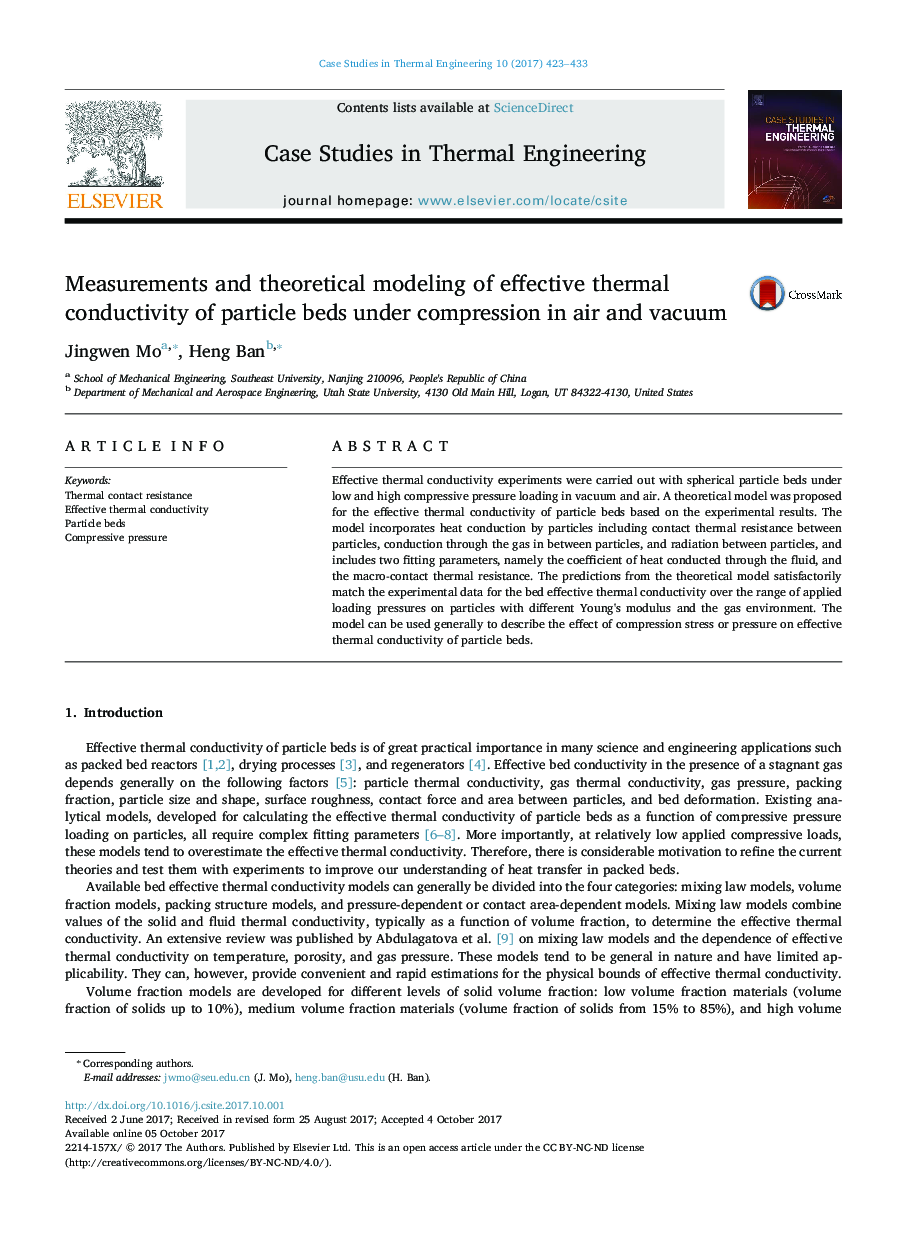| Article ID | Journal | Published Year | Pages | File Type |
|---|---|---|---|---|
| 5011240 | Case Studies in Thermal Engineering | 2017 | 11 Pages |
Effective thermal conductivity experiments were carried out with spherical particle beds under low and high compressive pressure loading in vacuum and air. A theoretical model was proposed for the effective thermal conductivity of particle beds based on the experimental results. The model incorporates heat conduction by particles including contact thermal resistance between particles, conduction through the gas in between particles, and radiation between particles, and includes two fitting parameters, namely the coefficient of heat conducted through the fluid, and the macro-contact thermal resistance. The predictions from the theoretical model satisfactorily match the experimental data for the bed effective thermal conductivity over the range of applied loading pressures on particles with different Young's modulus and the gas environment. The model can be used generally to describe the effect of compression stress or pressure on effective thermal conductivity of particle beds.
